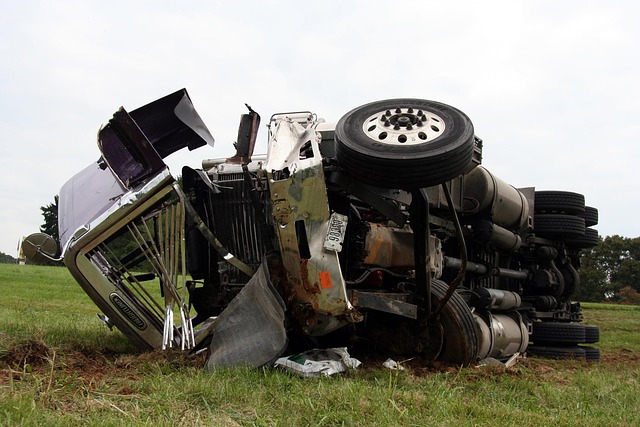Looking to register your car in California? This comprehensive guide walks you through the process step-by-step. First, understand the state’s registration requirements for vehicles. Gather essential documents, including proof of insurance and ownership. Use a VIN verifier to check your vehicle’s Identification Number (VIN) accurately. Visit a local California DMV office, complete the registration application, and pay the necessary fees. Ensure a smooth process by following these straightforward instructions.
- Understand California Car Registration Requirements
- Gather Necessary Documents for Car Registration
- Verify Vehicle Identification Number (VIN) with a Tool
- Visit a California Department of Motor Vehicles (DMV) Office
- Complete and Submit Car Registration Application
Understand California Car Registration Requirements

Before registering your car in California, it’s crucial to understand the state’s specific requirements for vehicle identification number (VIN) verification. The California Department of Motor Vehicles (DMV) mandates that all vehicles must undergo a comprehensive inspection to ensure they meet safety and environmental standards. This process involves verifying the VIN, which acts as a unique identifier for your car. A mobile VIN inspection or mobile VIN verifier can be particularly useful here, allowing you to complete this step conveniently.
The VIN is a 17-character code that provides detailed information about the vehicle, including its manufacture, model, and specifications. During registration, a reputable mobile VIN verification service or an authorized DMV agent will cross-check this number against their databases to confirm the car’s authenticity and history. This step is essential to prevent fraud and ensure you’re registering a legitimate vehicle.
Gather Necessary Documents for Car Registration

Before you start the registration process, it’s crucial to gather all the essential documents required by the California Department of Motor Vehicles (DMV). This includes your vehicle’s Certificate of Title, which you’ll likely receive from the seller after a successful transaction, and proof of insurance. Additionally, you’ll need a valid driver’s license or state ID card. If you’ve recently purchased a car through a dealership, they might handle some of these steps for you during the initial sale.
One critical document that you may not be aware of until now is your vehicle’s Vehicle Identification Number (VIN). This unique 17-character code acts as a fingerprint for your car and is crucial for registration. Consider using a mobile VIN verifier or conducting a simple online search to ensure the VIN on your papers matches the one on your vehicle. This step, while seemingly minor, can save you time and potential headaches during the registration process at the DMV.
Verify Vehicle Identification Number (VIN) with a Tool

Before proceeding with the registration process, it’s crucial to ensure your vehicle’s Vehicle Identification Number (VIN) is legitimate and accurate. This can be verified through a reliable VIN verifier, which plays a pivotal role in ensuring the authenticity of your car. Many services offer mobile vin inspection, allowing you the convenience of having your vehicle’s details checked right at your location.
A simple online or app-based vin inspection can provide instant validation, ensuring that the VIN matches the vehicle’s make, model, and year. This step is essential in preventing fraud and ensuring the smooth transition of ownership. By utilizing these tools, you’re taking a proactive approach to navigate California’s registration requirements with ease.
Visit a California Department of Motor Vehicles (DMV) Office

To initiate the car registration process in California, your first step is to visit a local California Department of Motor Vehicles (DMV) Office. This is where you’ll officially begin the paperwork and verification procedures required for your vehicle. When at the DMV, be sure to bring along all necessary documents, including proof of ownership, identification, and insurance.
One crucial aspect of this process involves using a Vehicle Identification Number (VIN) verifier. You can opt for traditional methods like visiting a DMV office or explore more convenient alternatives such as mobile VIN inspection or verification services. These options allow you to complete the VIN validation step from the comfort of your home, saving you time and effort.
Complete and Submit Car Registration Application

To begin the car registration process in California, you’ll need to complete and submit the Car Registration Application, which is available at your local DMV office or online. This form requires detailed information about your vehicle, including its make, model, year, and unique Vehicle Identification Number (VIN). The VIN is a crucial piece of data used for verification purposes, so ensure it’s accurately recorded.
A key step in the process involves getting a vin inspection or vin verification to confirm the vehicle’s identity and condition. In California, you can opt for a traditional visit to a DMV field office or leverage mobile vin inspection services that come to your location, making it more convenient for busy individuals. These services provide a quick and accurate way to verify your car’s details before submitting the registration application.
Registering your car in California involves understanding state requirements, gathering essential documents, and verifying the Vehicle Identification Number (VIN) using a reliable VIN verifier. After completing these steps, visit a local DMV office to submit your application. By following these straightforward procedures, you’ll ensure your vehicle is legally registered and ready to hit the road smoothly.



